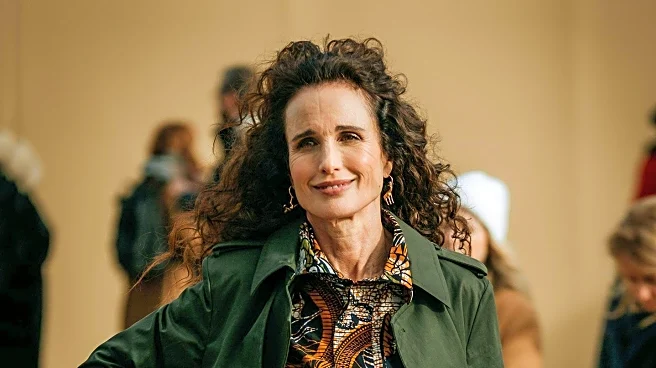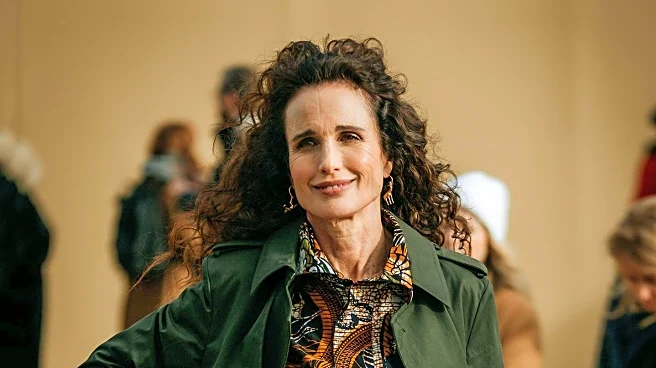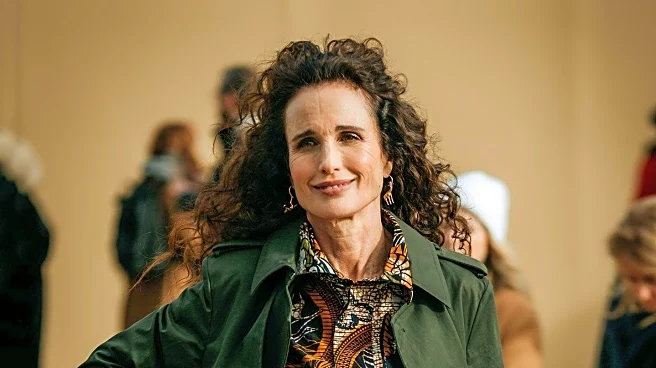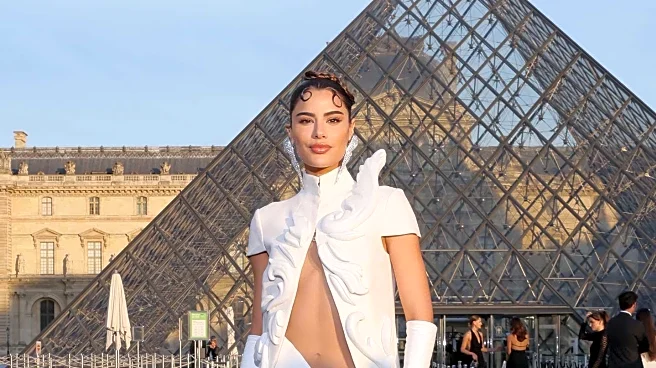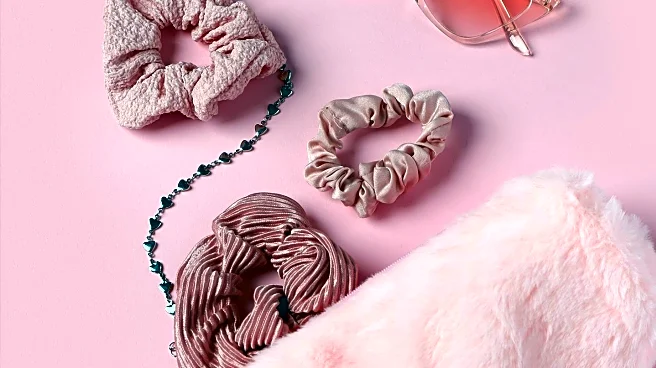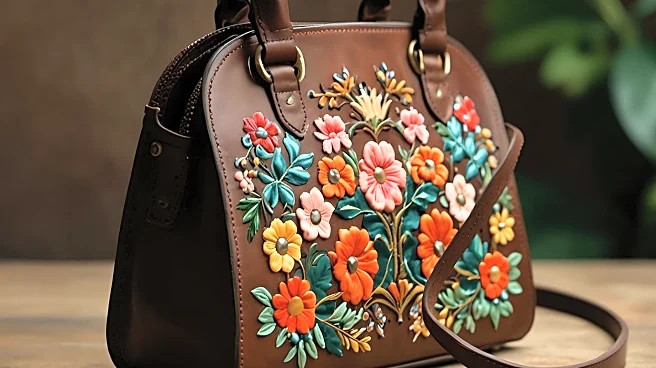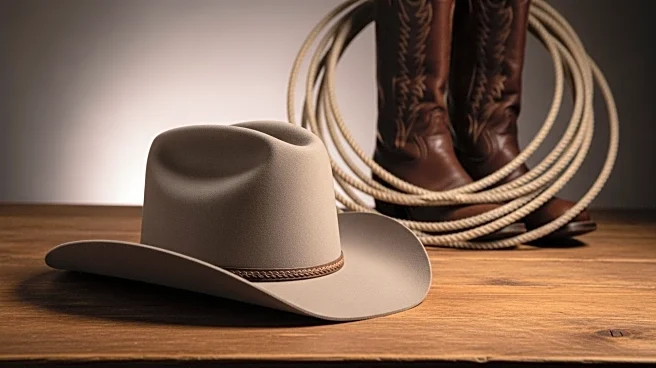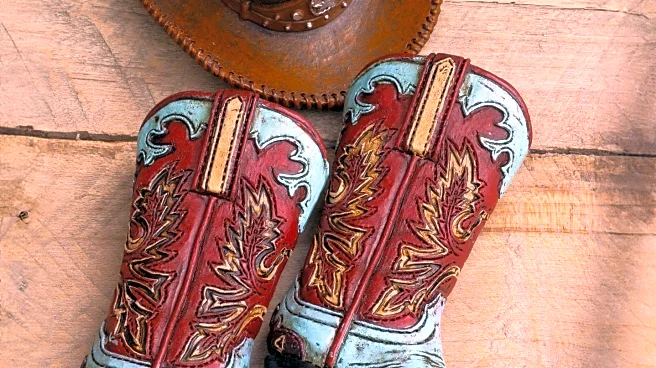What is the story about?
What's Happening?
Paris Fashion Week has showcased a vibrant array of street style trends for the fall season, emphasizing bold textures and prints. The event, which runs until October 7, has seen attendees embracing a more expressive and colorful approach to fashion, moving away from the traditional minimalist style often associated with Parisians. Key trends include the use of tactile fabrics such as corduroy, brocade, silk, and taffeta, paired with striking patterns like houndstooth, plaid, stripes, and argyle. This season's fashion choices reflect a desire for personality-driven dressing, with showgoers opting for daring combinations that create a visual feast.
Why It's Important?
The trends emerging from Paris Fashion Week are likely to influence global fashion markets, including the U.S., as designers and retailers look to these events for inspiration. The emphasis on bold textures and prints could lead to increased demand for diverse fabric offerings and innovative designs in the fashion industry. This shift towards more expressive fashion may also impact consumer behavior, encouraging individuals to experiment with their personal style. Retailers and brands in the U.S. might see an opportunity to capitalize on these trends by offering more eclectic and vibrant collections, potentially boosting sales and market engagement.
What's Next?
As Paris Fashion Week continues, further trends may emerge that could shape the upcoming fashion seasons. Designers and brands will likely analyze the reception of these styles to adjust their future collections accordingly. In the U.S., fashion retailers may begin to incorporate these trends into their winter and spring lines, aiming to attract consumers seeking fresh and bold fashion statements. The ongoing evolution of fashion trends from such high-profile events will continue to play a significant role in shaping the industry's direction.
Beyond the Headlines
The move towards more expressive and bold fashion choices at Paris Fashion Week may reflect broader cultural shifts towards individuality and self-expression. This trend could influence not only fashion but also other creative industries, encouraging a more open and diverse approach to design and aesthetics. Additionally, the focus on texture and print might inspire sustainable fashion practices, as designers explore innovative materials and techniques to create unique and environmentally friendly garments.
AI Generated Content
Do you find this article useful?
